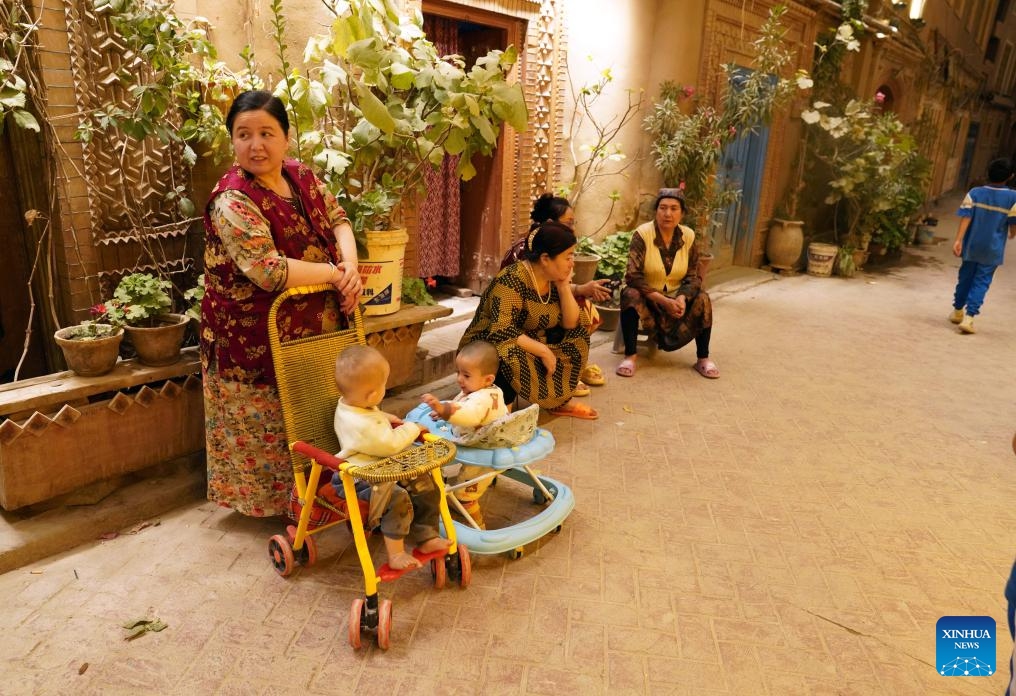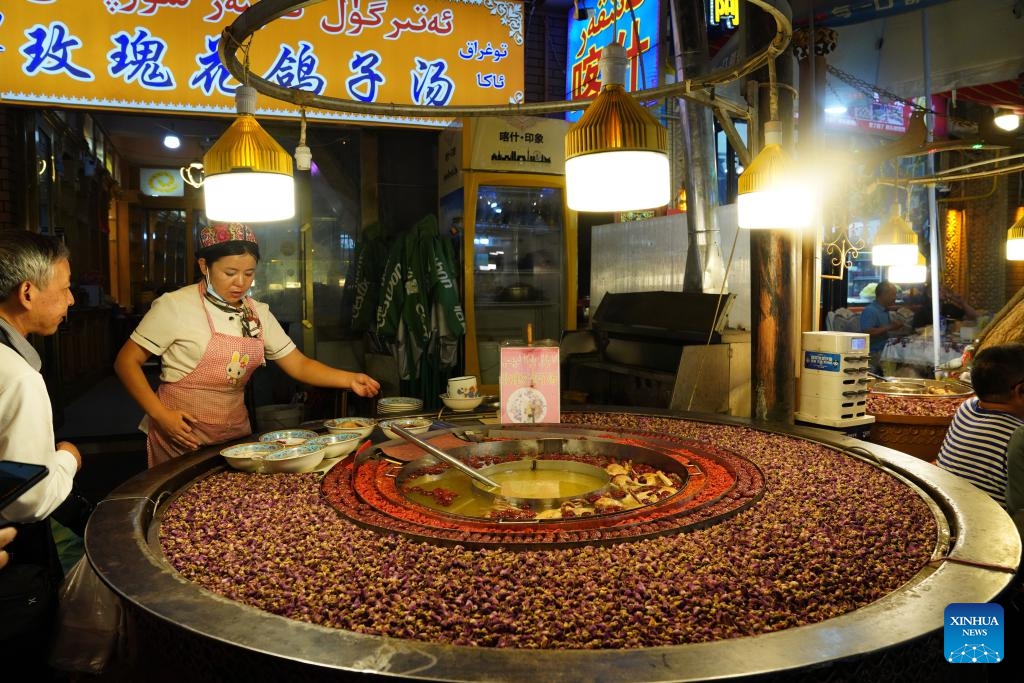
A tourist poses for a photo in the ancient city of Kashgar, northwest China's Xinjiang Uygur Autonomous Region, Sept. 19, 2024. (Photo: Xinhua)

Local residents enjoy their leisure time in the ancient city of Kashgar, northwest China's Xinjiang Uygur Autonomous Region, Sept. 19, 2024. (Photo: Xinhua)

Tourists visit a local residential building with more than 300 years of history in the ancient city of Kashgar, northwest China's Xinjiang Uygur Autonomous Region, Sept. 19, 2024. (Photo: Xinhua)

A tourist buys local snacks in the ancient city of Kashgar, northwest China's Xinjiang Uygur Autonomous Region, Sept. 19, 2024. (Photo: Xinhua)
The ancient city of Kashgar, located in southwestern Xinjiang, served as a vital transportation hub connecting China with Central Asia and South Asia in ancient times. The confluence of diverse ethnic cultures in this region has given rise to a wealth of historical and cultural treasures.
Today, Kashgar has harnessed its cultural and geographical advantages, transforming into a unique tourist destination that blends history and modernity.
In the first eight months of 2024, Kashgar received over 19.5 million domestic tourists, an increase of 29.46 percent year-on-year, and generated tourism revenue of nearly 15.35 billion yuan (about 2.18 billion U.S. dollars), up 38.83 percent.
